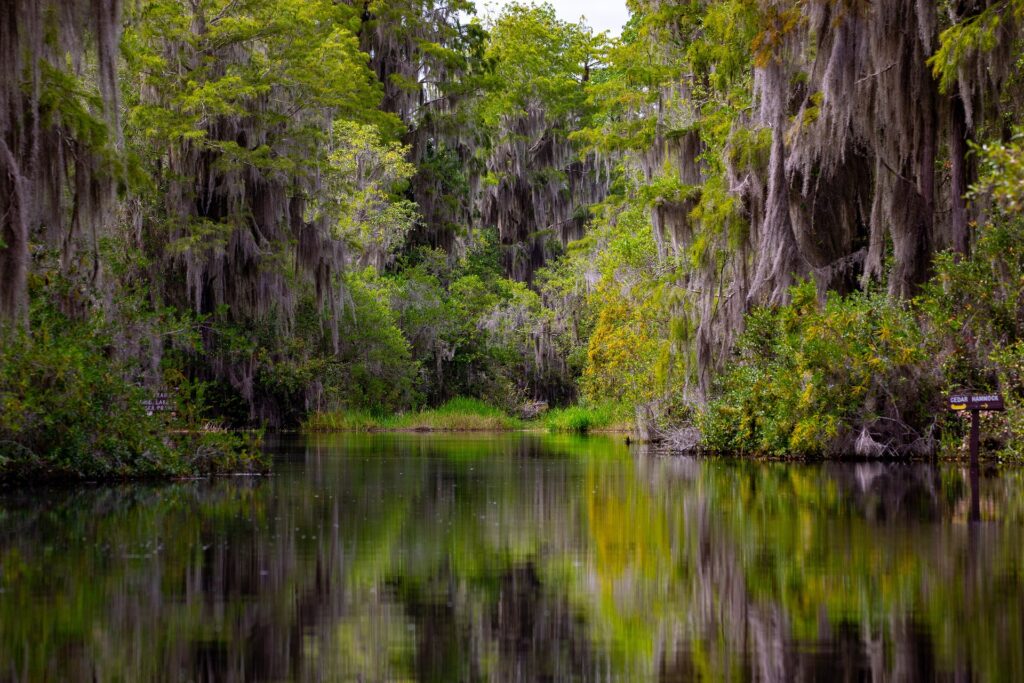
ATLANTA – Georgians ranging from expert scientists to a high-school student testified against a proposed mining site on the edge of the Okefenokee Swamp Tuesday night during a virtual public hearing.
The diverse group outlined the potential environmental and cultural damage the proposed titanium oxide mine could inflict on the largest blackwater swamp in North America.
Twin Pines Minerals, an Alabama mining company, has applied for permission to build the mine along Trail Ridge in Charlton County near the southeastern edge of the swamp.
The controversial proposal has been the subject of a jurisdictional back-and-forth between federal and state environmental agencies.
Currently, the state Environmental Protection Division (EPD) has jurisdiction over the mining company’s plan. Earlier this year, Twin Pines submitted a draft Mining Land Use Plan to EPD. The plan must be finalized before the EPD can proceed with a draft permitting process.
During the hearing, opponents outlined a host of reasons they believe the mine should not be built.
“According to numerous independent scientists, the mine will damage the swamp, first by lowering the swamp’s water level and second by dumping over one ton per day of salt into the swamp as a result of its wastewater evaporation,” said Joshua Marks, president of Georgians for the Okefenokee.
Marks also highlighted a letter signed by University of Georgia professor Rhett Jackson and ten other hydrology professors that contends the EPD used incorrect locations in evaluating the impact of the mine.
“EPD used the wrong river gauge [location], 15 miles downstream of the swamp to evaluate the mine’s impact, instead of the gauge right next door,” Marks said. “This would be like going to a doctor for a shoulder sprain [but the] doctor instead examines your ankle.”
Seventeen-year-old Natalie Kloss, a student at The New School in Atlanta, recently visited the Okefenokee Swamp on a field trip.
“It’s a beautiful place. It’s inspiring.” Kloss said. “It’s an invaluable resource for students and for young people, especially now, and I think it’d be a shame for Georgia to be the one that allows it to be unprotected.”
Brian Foster of the Georgia Conservancy explained some of the unique benefits the swamp provides to Georgia: It is a gold-tier International Dark Sky Park, a national wilderness area, and a national natural landmark that provides boating, fishing, birding, hunting and photography opportunities. The swamp, which is home to the headwaters for both the St. Marys and Suwanee rivers, draws more than 650,000 annual visits and supports 800 jobs.
In contrast, the jobs the new mine might provide are not worth the cost, said Stephanie Ramage, who grew up in Laurens County.
“Anyone who has eyes to see and ears to hear … can see that it is unlike any place in the world,” Ramage said. “Look, South Georgia, don’t trade what you’ve got – don’t trade it for a handful of jobs because that’s all you’re going to get.”
Maelyn Belmondo, who lives in Blackshear in Pierce County, described visiting the swamp as a child with her parents and grandmother.
“Some of my greatest memories were trawling around in the swamp,” Belmondo said. Now she hopes to recreate those memories with her own children.
“We have started going canoeing as a family,” Belmondo said. “I also look forward to planning our first overnight canoe trip … so we can lay out under the stars and enjoy the darkness of the swamp due to the lack of light pollution.”
“When I think about these memories that I have … I think about how traumatic this mining project can be.”
A second virtual public comment session is planned for Thursday night at 6 PM. People can also submit written public comments via email to [email protected] until March 20.
This story is available through a news partnership with Capitol Beat News Service, a project of the Georgia Press Educational Foundation.
